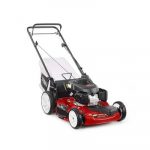Gardeners tend to forego placing plants on slopes. A slope presents problems for gardeners. They help to encourage erosion and dried out soil among other issues. This is why gardeners tend to ignore them. However, it doesn’t have to be this way. Sure, slopes present challenges, but if a gardener believes in her skills, then these challenges can be overcome through planning and experience.

Before taking on a slope, an ambitious gardener is urged to do some research first. There are plants available that thrive growing on a slope. Many of these plants not only look good, they can also assist are stabilizing the hillside.
Selecting Plants For Slopes And Banks
The first thing to do is evaluate the pitch and runoff of the slope. Slopes with a pitch of 30 degrees will probably required the terracing of the area to avoid topsoil eroding and moisture evacuation whenever you water or when it rains. If the pitch is less than 30 degrees, then terracing isn’t necessary. The plants you select can handle water evacuation and erosion. The roots are the key.
When selecting plants for placement on a slope, consider visual preferences and the requirements of the area. Deep rooted plants help stabilize soil, trees add dimension and shade that prevents excessive evaporation and low growing ground covers hide unappealing areas of the slope.
You could just plant turf grass and leave it at that. However, maintenance of the grass will be required including mowing and watering. Mowing would be a great challenge due to the pitch of the area and water will runoff. So, if you go the grass route, include plants that can tolerant wind as well as an occasional drought and create wide branching root zones to anchor the plants to the incline. Selecting plants that don’t require much maintenance may make your job easier in the long run.
Ideal Plants For Slopes
Styles of plants that would fit the milieu include taller shrubs and bushes. They provide interest due to the flowers they bloom and they assist in giving the area a sculptured appearance. Be aware however that young plants will need additional watering as well as staking and training so that they can establish.
To lessen the maintenance, select plants that don’t make a mess and don’t require a clean up of the area every year. Plants that will work well on slopes include:
• Burning Bush
• Fragrant Sumac
• Japanese Yew
• California Lilac
• Creeping Juniper
• Dwarf Forsythia
• Snowberry
• Siberian Carpet Cypress
Groundcovers would also work to prevent erosion and add color and texture to the area. Ignore groundcovers that might need mowing, shearing, and other maintenance. Some groundcovers for slopes that get direct sunlight include:
• Prostrate Rosemary
• Dwarf Coyota Bush
• Vinca
• Creeping Myoporum
• Rockrose
• Cotonester
• English Ivy
If the slope is bathed in shade, then consider these plants that thrive in that environment.
• Japanese Pachysandra
• Vinca
• Beach Strawberry
• Kinnikinnik
You may want to consider ornamental grasses if you want more dimension and color. These include:
• Red Fescue
• Little Bluestem
• Switchgrass
• Canada Wildrye
Blooming flowers would be ideal for the area, too. You can seed the slope with wildflowers indigenous to the region or select hardy ornamental perennials that include:
• Violets
• Daylilies
• Deadnettle
• Roses
• Spring Bulbs
• Coneflower
• Russian Sage
Growing plants on a hillside will required some initial time researching flora you may want to use, careful selection, and a little extreme care for the plants at least until they establish.
(Source: gardeningknowhow.com)






